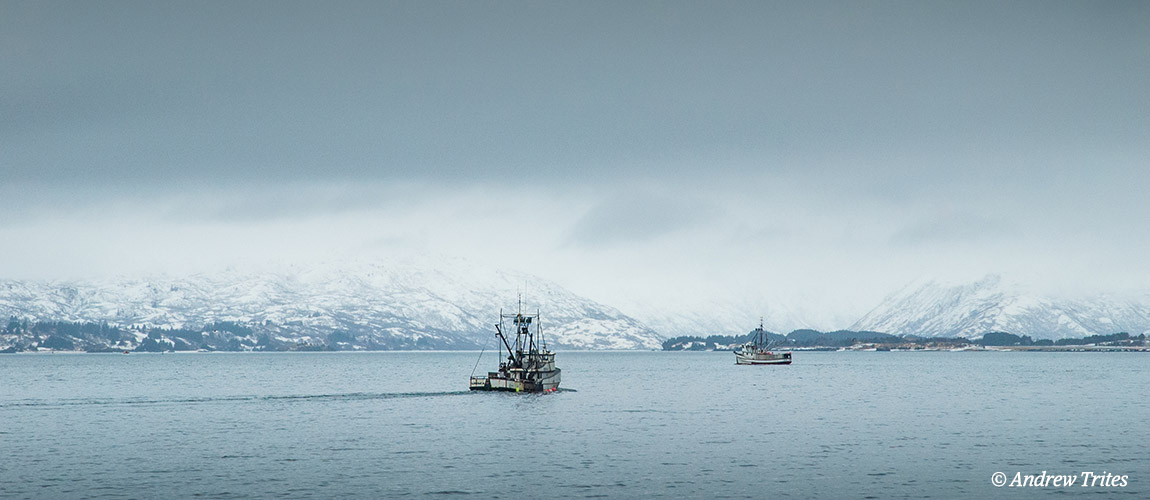
The migration of fish due to unmitigated climate change could net fisheries in the Arctic 37 times more fish than current annual catch amounts by the end of the century, a new study from the University of British Columbia has found. But, the researchers warn, any future commercial fisheries must ensure species and ecosystem sustainability and consider the food security implications for local communities.

Travis Tai
The study, published recently in Marine Policy, also found that under a moderate climate change scenario where emissions are curbed, a moderate amount of fish could still be caught sustainably.
Currently, marine capture fisheries in Arctic Canada are small relative to other regions in the country, but small scale, community fisheries — predominantly in Inuit communities — are more widespread. The average annual catch between 2005 and 2014 was 189,000 tonnes of fish across all four Arctic regions, with the average annual value for the same period estimated at $560 million.
Arctic ecosystems may not be ecologically suitable as a refuge for sub-polar species, or resilient to increased exploitation, say the authors
Comparisons conducted in the study suggest the annual sustainable fisheries catch potential could be much greater at 4.07 ( ± 2.86) million tonnes. In a high climate change scenario, this number increases to 6.95 ( ± 5.07) million tonnes of catch in the future (2091-2100). Under a low climate change scenario, catch potential was similar to current estimates.
However, Tai, lead author of the study, warned that their estimates should be interpreted with caution.
“Climate change and more favourable environmental conditions are triggering increased exploration and development of commercial fisheries in Canada’s Arctic, but Arctic ecosystems may not be ecologically suitable as a refuge for sub-polar species, or resilient to increased exploitation,” said Tai. “What our results reinforced was the need to take proper measures to ensure the sustainability of our Arctic resources while considering the ecological, social, cultural, and economic impacts to one of the only unexploited and pristine marine regions left in the world, and the communities that live there.”
This includes assessing the impacts on marine mammals and Arctic ecosystems, subsistence fishing for Inuit communities, the dangers and environmental cost of travel, fishing seasons, and historical travel routes, among other factors.
The study highlights the effects of climate change on current and future species distribution and abundance as climate change and increasingly favourable environmental conditions trigger renewed exploration and development of commercial fisheries.
“Our goal was to evaluate the current and long-term potential of commercial Arctic fisheries in Canada with regards to its contribution to food security and the economy, even in regions that already have substantial commercial catches, such as Baffin Bay,” said Sumaila. “Because these areas are more or less undeveloped, they present a unique opportunity to extensively study and assess how best to achieve sustainable outcomes.”
The study aimed to estimate existing fisheries and, using an integrated modelling approach, build scenarios to estimate current and future fisheries potential under different climate scenarios. This allowed the study authors to use projection models to estimate changes in the distribution and abundance of commercially-valuable polar and sub-polar species. Potential fisheries catch was estimated along with the potential catch-value of commercial species across Canada’s Arctic.
“We were interested in the implications of developing large-scale commercial fisheries in Canada’s Arctic and assessing the region’s ability to support management and sustainability of marine fisheries resources into a changing future,” said Tai.
This work was supported by OceanCanada, a partnership supported by the Social Sciences and Humanity Research Council of Canada (SSHRC), as well as the Marine Environmental Observation Prediction and Response Network, Environment and Climate Change Canada, Fisheries and Oceans Canada, the Marine Affairs Program, the Nippon Foundation-UBC Nereus Program, and the Natural Sciences and Engineering Research Council of Canada.
The article, Evaluating present and future potential of arctic fisheries in Canada, was published in Marine Policy. Authors include: Travis C.Tai, Nadja S. Steiner, Carie Hoover, William W.L.Cheung, and U. RashidSumaila.
Tags: Aboriginal fisheries, Arctic, Canada, climate change, faculty, fish stocks, fisheries management, Indigenous fisheries, IOF postdoctoral fellows, Nereus Program, OceanCanada, Rashid Sumaila